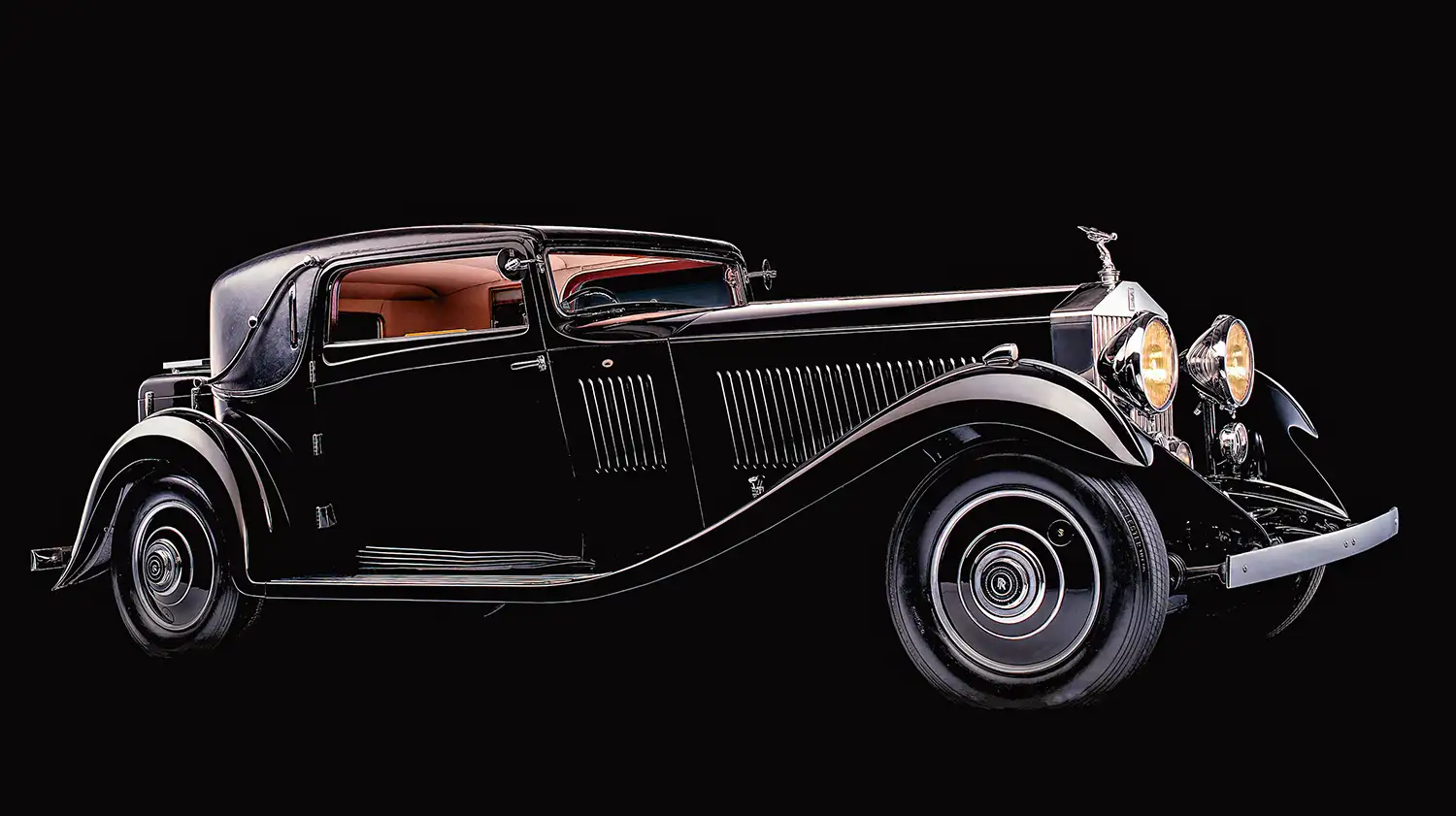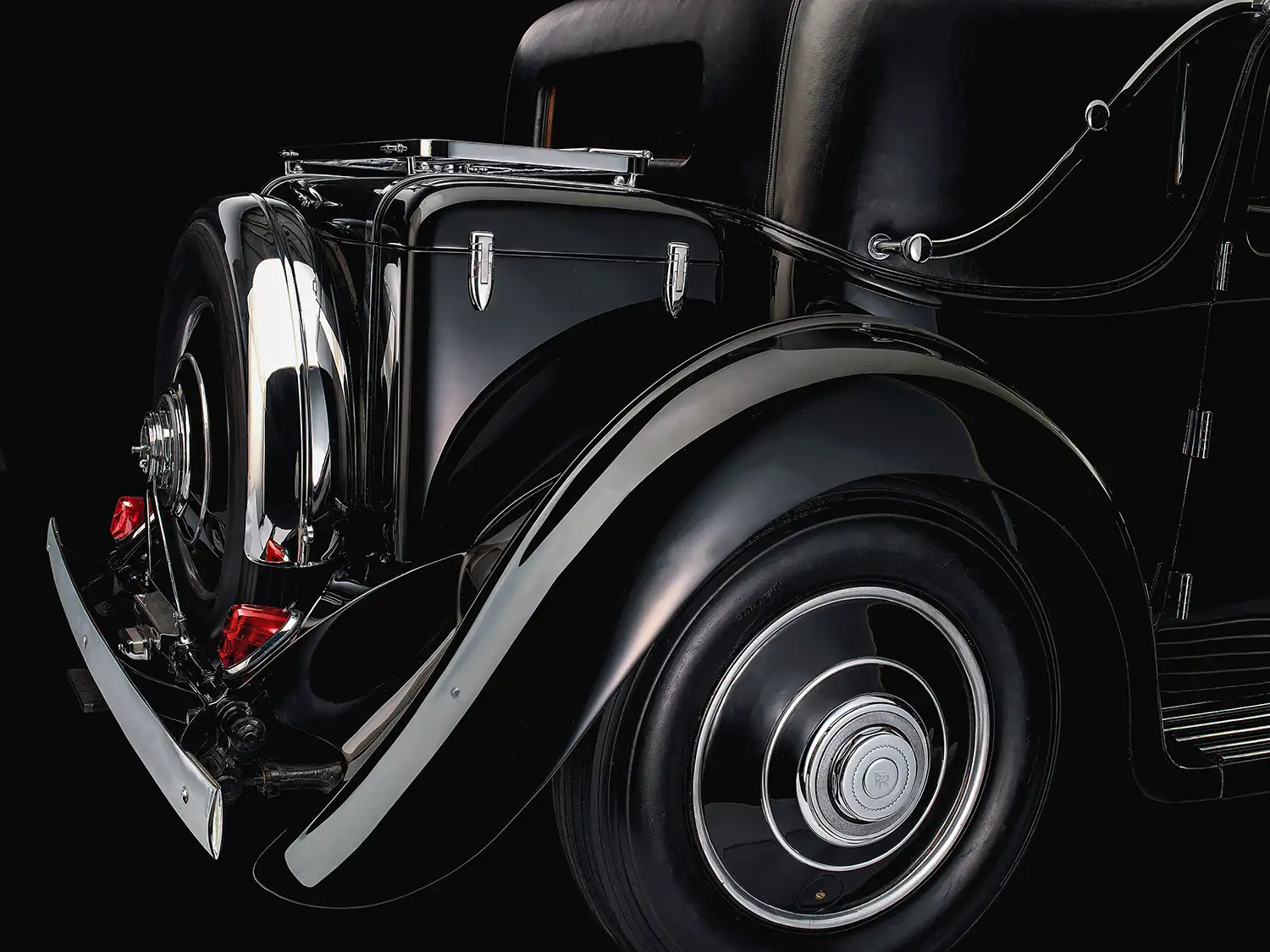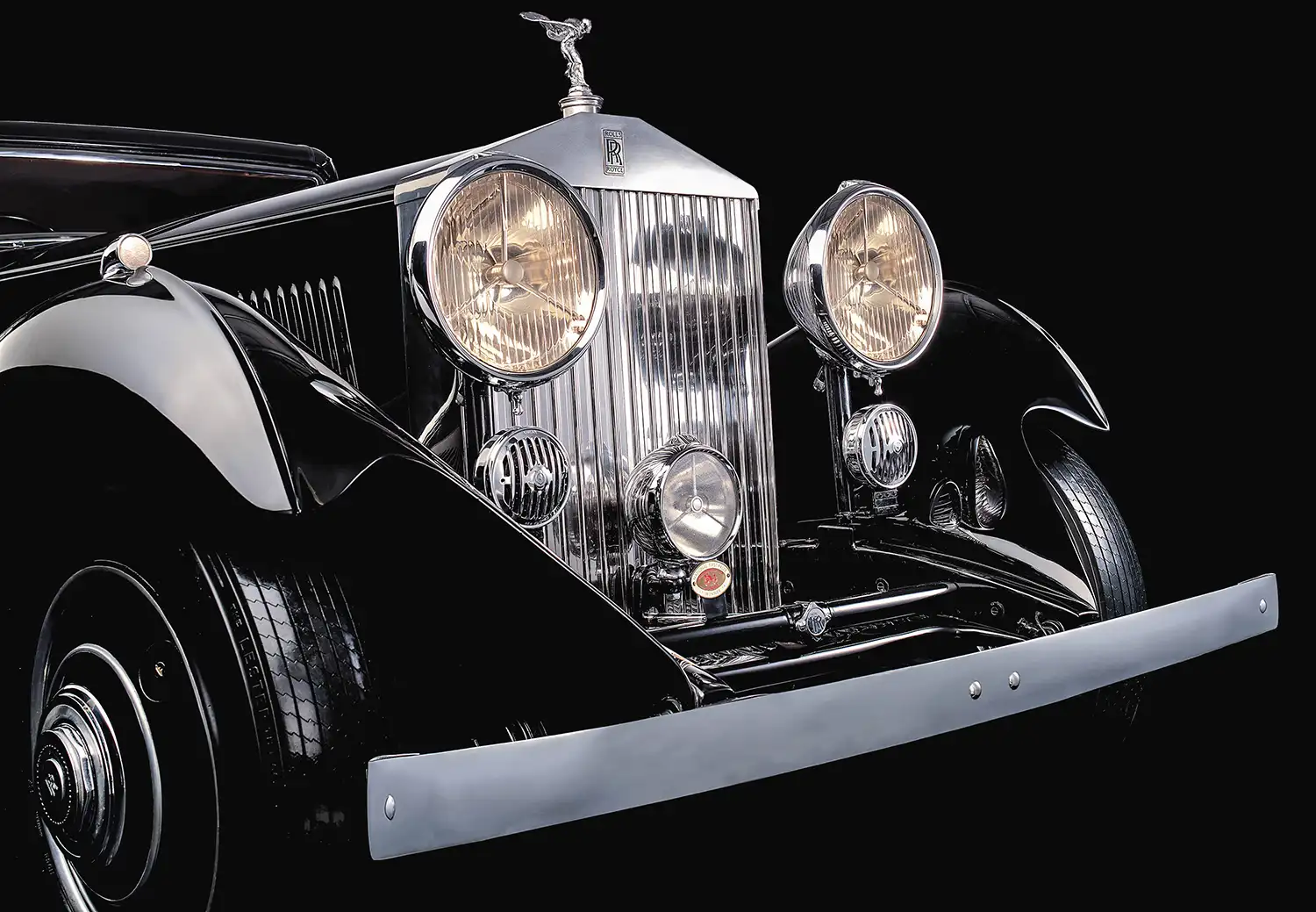
The 1933 Rolls-Royce Phantom II Continental, chassis number 94MY, stands as a testament to the elegance, engineering excellence, and bespoke craftsmanship that have defined the Rolls-Royce marque for over a century. This remarkable vehicle was one of the first in a series specifically designed for long-distance Continental touring, embodying the luxury and performance that made Rolls-Royce the preferred choice of discerning motorists worldwide.
The Genesis of the Phantom II Continental
The concept of the Phantom II Continental was born in 1930, following a personal request from Henry Royce himself. Royce tasked designer Ivan Evernden with creating a car tailored for high-speed touring across Europe’s vast and varied landscapes. The result was the experimental Phantom II Continental, designated 26EX. This prototype featured a shorter chassis for improved handling and a close-coupled four-seat saloon body, with its coachwork meticulously crafted by Barker & Co.
One of the standout features of 26EX was the strategic placement of its two spare wheels, mounted vertically behind the luggage compartment to optimize weight distribution. This, along with the sub-frame designed to handle sustained high speeds and powerful braking, made the car exceptionally well-suited for long-distance travel.

In its first public appearance, 26EX was driven to Biarritz by Evernden and Don Carlos de Salamanca, where it triumphed at the Concours d’Elegance, winning the Grand Prix d’Honneur. The success of 26EX prompted Rolls-Royce to develop a series production model, maintaining the mechanical prowess and overall dimensions of the prototype while allowing for individual customization by owners and coachbuilders.
94MY: A Masterpiece of Bespoke Craftsmanship
The first of these series models, chassis 94MY, was completed in 1933 for Mr. Samuel Coxhill. It featured the exquisite ‘Owen Fixed Head Coupé’ bodywork, a hallmark of the esteemed London coachbuilder Gurney Nutting. The design of 94MY was ahead of its time, with features such as adjustable front bucket seats, twin windscreen wipers, and flush-fitting direction indicators behind the side windows—details that were rare and innovative in the 1930s, all aimed at enhancing the comfort and convenience of long-distance touring.
Ivan Evernden, reflecting on the design ethos of the Phantom II Continental, famously stated: “It is the criterion of a good car that one can drive it the whole day long and at the end feel fresh and relaxed enough to enjoy dinner.” This philosophy was perfectly embodied in 94MY, a car that combined powerful performance with unparalleled comfort.
A Unique Aesthetic
In an era when most Rolls-Royce vehicles were finished in conservative shades of black or deep maroon, 94MY stood out with its striking combination of black exterior paint, “special brown leather piped in light brown” interior, and matching carpets and headlining. The highly polished veneer woodwork added to the car’s sense of bespoke luxury. This unique and personalized finish makes 94MY a precursor to the modern Rolls-Royce Black Badge series, which caters to customers seeking a more individualistic and contemporary expression of luxury.
Legacy
The 1933 Phantom II Continental, particularly chassis 94MY, remains a symbol of Rolls-Royce’s ability to blend performance, luxury, and personalized craftsmanship into a single, cohesive masterpiece. It represents a pivotal moment in the brand’s history, marking the transition from mere transportation to a luxurious, bespoke experience tailored to the tastes and demands of its owners.
Today, 94MY is celebrated not only for its historical significance but also for its continued embodiment of the values that define Rolls-Royce: unmatched quality, timeless elegance, and a commitment to creating vehicles that are as enjoyable to drive as they are to behold.
Source: Rolls-Royce
This Article use tools from Chatgpt
